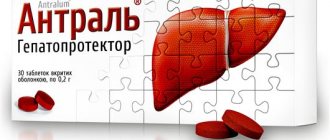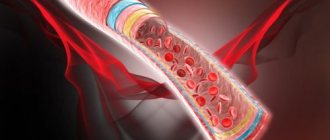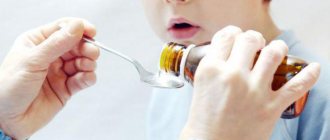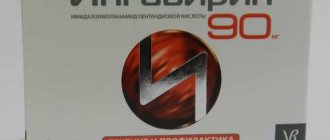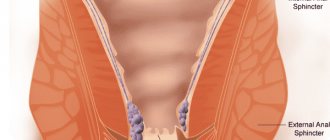Photo: lekhar.ru Photo: apteki-moskvy.ru Photo: zdravzona.ru
Bicillin- 1 is an antibiotic of the penicillin group. Has a bactericidal effect. Active ingredient: Benzathine benzylpenicillin.
You need to know that due to prolonged absorption, the drug is detectable in urine for 12 weeks. Available with prescription!
Release form and composition
The medicine is produced in the form of a powder, from which a suspension is prepared for intramuscular administration, with different compositions in 10 ml bottles. So, the drug comes in three types:
- Bicillin 1, one bottle of which contains 600 thousand units, 1.2 million units or 2.4 million units of benzathine benzylpenicillin;
- Bicillin 3, one bottle of which contains 600 thousand units or 1.2 ml. ED of a mixture of benzathine benzylpenicillin, benzylpenicillin sodium (or potassium) salt and benzylpenicillin novocaine salt (200 thousand or 400 thousand of each substance, respectively);
- Bicillin 5, one bottle of which contains 1.2 million units of benzathine benzylpenicillin and 300 thousand units of benzylpenicillin novocaine salt (total dosage 1.5 million).
Drug interactions
| Bicillin®-5 | Powder for preparation. susp. intramuscular injection 1.2 million units 300 thousand units: vial. 1, 5, 10 or 50 pcs. reg. No.: LS-000082 from 09.30.09 - Indefinitely |
Bactericidal antibiotics (including cephalosporins, vancomycin, rifampicin, aminoglycosides) have a synergistic effect; bacteriostatic (including macrolides, chloramphenicol, lincosamides, tetracyclines) - antagonistic.
Increases the effectiveness of indirect anticoagulants (suppressing intestinal microflora, reduces the prothrombin index); reduces the effectiveness of oral contraceptives, drugs whose metabolism produces para-aminobenzoic acid, ethinyl estradiol - the risk of breakthrough bleeding.
Diuretics, allopurinol, tubular secretion blockers, phenylbutazone, NSAIDs, by reducing tubular secretion, increase the concentration of benzylpenicillin in the blood and tissues.
Allopurinol increases the risk of allergic reactions (skin rash).
The simultaneous use of this drug with bactericidal antibiotics, for example: cephalosporins, cycloserine, vancomycin, rifampicin, aminoglycosides can cause a synergistic effect.
In addition, a decrease in the effectiveness of oral contraceptives or ethinyl estradiol was noted. Diuretics, phenylbutazone, allopurinol and NSAIDs can reduce tubular secretion or increase drug concentrations. The combination with allopurinol often causes allergic reactions, mainly in the form of skin manifestations.
Combination with bacteriostatic agents: macrolides, chloramphenicol, lincosamides and tetracyclines causes an antagonistic effect.
| Bicillin®-3 | Powder for preparation. susp. intramuscular injection 1.2 million units: vial. 10, 50, 100 or 500 pcs. reg. No.: Р N000819/01 dated 07.11.07 - Indefinitely | |
| Powder for preparation. susp. intramuscular injection 600 thousand units: vial. 10, 50, 100 or 500 pcs. reg. No.: Р N000819/01 dated 07.11.07 - Indefinitely |
When used simultaneously with bactericidal antibiotics (including cephalosporins, cycloserine, vancomycin, rifampicin, aminoglycosides), a synergistic effect is observed; with bacteriostatic antibiotics (including macrolides, chloramphenicol, lincosamides, tetracyclines) - antagonism.
Bicillin-3 reduces the effectiveness of oral contraceptives and ethinyl estradiol (risk of breakthrough bleeding).
With the simultaneous use of Bicillin-3 with allopurinol, the risk of developing allergic reactions increases.
Pharmacokinetic interaction
With simultaneous use of diuretics, allopurinol, phenylbutazone, NSAIDs, they reduce tubular secretion and increase the concentration of penicillin.
Indications for use
As indicated in the instructions for Bicillin, this drug is intended for the treatment of infectious diseases caused by pathogens sensitive to benzathine benzylpenicillin, especially in cases where there is a need to create a long-term therapeutic concentration of the active substance in the blood. So, this drug is prescribed for therapy:
- Acute tonsillitis;
- Erysipelas;
- Yaws;
- Pints;
- Scarlet fever;
- Syphilis;
- Leishmaniasis.
Bicillin, according to the instructions, can also be used for the prevention of:
- Wound infections;
- Recurrence of erysipelas;
- Repeated attacks after acute rheumatic fever;
- Postoperative complications.
Bicillin-5 for animals
The drug is used to treat cattle, sheep, goats, horses, foxes, arctic foxes, minks, dogs, pigs with necrobacteriosis, pasteurelosis, pneumonia, mastitis, metritis, wound infection, otitis, urinary tract infection, septicemia, phlegmon; actinomycosis, emphysematous carbuncle; streptococcal septicemia of cattle, sheep and goats; washing horses, stachyobryotoxicosis, streptococcosis, staphylococcosis, infectious stomatitis, rhinitis, plague of fur-bearing animals and dogs, erysipelas of pigs caused by microorganisms sensitive to the components of the drug.
Contraindications
According to the annotation for the drug, the use of Bicillin is contraindicated:
- With hypersensitivity to penicillins, novocaine and other beta-lactam antibiotics;
- Breastfeeding women.
Prescribe medication, but with extreme caution and under the supervision of doctors:
- Pregnant women;
- Patients with renal failure;
- For pseudomembranous colitis;
- Patients with bronchial asthma;
- For hay fever, other allergic diseases and allergies.
Pharmacological properties
Pharmacodynamics.
The drug has a bactericidal effect by inhibiting the synthesis of mucopeptides in the cell membrane of microorganisms. Active against gram-positive microorganisms : Staphylococcus
spp.
(except penicillinase-producing), Streptococcus
spp.
(including Streptococcus pneumoniae
),
Corynebacterium diphtheriae, Bacillus anthracis
;
gram-negative : Neisseria gonorrhoae, Neisseria meningitidis, Astinomyces israelii
, as well as
Treponema
spp., anaerobic spore-formers. Most gram-negative bacteria, mycobacteria, fungi, viruses, and protozoa are resistant to the drug.
Pharmacokinetics.
The drug has a prolonged effect. When administered intramuscularly, a drug depot is formed in muscle tissue. A high level of drug concentration is created already in the first hours after injection; the therapeutic concentration of benzylpenicillin remains in the blood for 28 days or more in the vast majority of patients (children and adults). It is excreted from the body primarily by the kidneys, a small amount of the drug is excreted in sputum, sweat, saliva, tear fluid, and penetrates into breast milk.
Clinical characteristics.
Directions for use and dosage
The solution prepared from the powder is administered only intramuscularly; intravenous administration is prohibited!
The specific dosage, frequency of injections and duration of use depend on the type of disease and the severity of its course.
Bicillin 1 and Bicillin 3 are prescribed to adults in a single dose from 300 thousand units to 2.4 ml. ED, for children - at the rate of 5-10 thousand ED per kilogram of weight.
Bicillin 5 is prescribed to adults at a dose of 1.5 million units once every 4 weeks, to children over 8 years old - 1.2 million units once a month, to children under 8 years old - 600 thousand units once every three weeks.
The suspension is prepared immediately before administration.
3-5 ml of injection water or 0.9% NaCl solution is injected into the bottle with Bicillin 1.
2-3 ml of injection water or isotonic NaCl solution is injected into the bottle with Bicillin 3.
5-6 ml of sodium chloride solution, sterile water or 0.25-0.5% procaine solution are introduced into the bottle with Bicillin 5.
The mixture is shaken well until a homogeneous suspension is obtained, gently shaking the bottle in the direction of its longitudinal axis for 30 seconds or quickly rotating it between the palms for 1 minute.
Pharmacokinetics
Suction
With a single administration, it remains in an average therapeutic concentration for 6-7 days. Cmax in blood plasma is achieved 12-24 hours after administration.
After administration of Bicillin-3 at a dose of 2.4 million units, the concentration in the blood serum on day 14 is 0.12 mcg/ml; after administration of Bicillin-3 at a dose of 1.2 million units, the concentration in the blood serum on day 21 is 0.06 mcg/ml.
Distribution and metabolism
After intramuscular administration, it is slowly hydrolyzed to release benzylpenicillin.
Slightly undergoes biotransformation.
Binding to blood plasma proteins is 40-60%. Passes through the placental barrier and enters breast milk.
It is well distributed in liquids, while the distribution in tissues is low.
Removal
It is excreted primarily by the kidneys.
Bicillin®-5 is a long-acting drug; a high concentration of the antibiotic in the blood lasts up to 4 weeks.
Benzathine benzylpenicillin
Following intramuscular injection of benzathine, benzylpenicillin is very slowly hydrolyzed, releasing benzylpenicillin. The maximum concentration of the drug in the blood serum is achieved 12-24 hours after injection. The long half-life ensures a stable and long-term concentration of the drug in the blood: on the 14th day after elimination of 2,400,000 IU of the drug, the serum concentration is 0.12 mcg/ml; on the 21st day after administration of 1,200,000 IU of the drug - 0.06 mcg/ml (1 IU = 0.6 mcg). Diffusion of the drug in liquid is complete, diffusion into tissue is very weak. Communication with plasma proteins is 40-60%. Benzathine benzylpenicillin passes in small quantities through the placental barrier and also penetrates into mother's breast milk. Biotransformation of the drug is insignificant. It is excreted mainly by the kidneys unchanged. Over 8 days, up to 33% of the administered dose is released.
Benzylpenicillin
The maximum concentration in blood plasma after intramuscular administration is achieved after 20-30 minutes. The half-life of the drug is 30-60 minutes, in case of renal failure 4-10 hours or more. Communication with plasma proteins - 60%. Penetrates into organs, tissues and biological fluids, except for cerebrospinal fluid, eye tissue and prostate gland. During inflammation of the meningeal membranes, it penetrates the blood-brain barrier. Passes through the placenta and enters breast milk. Excreted unchanged by the kidneys.
Side effects
When using Bicillin, there is a risk of developing the following adverse effects from the body:
- Reversible anemia, leukopenia or thrombocytopenia (from the hematopoietic system);
- Stomatitis, glossitis, nausea, diarrhea, vomiting, candidiasis, pseudomembranous colitis, moderate transient increase in serum transaminases (from the digestive system)
- Acute interstitial nephritis (from the urinary system).
In addition, if there is hypersensitivity or intolerance to any component of Bicillin, allergic reactions are possible in the form of fever, urticaria, erythema multiforme, exfoliative dermatitis, angioedema, joint pain, difficulty breathing, anaphylactic shock. Due to the release of endotoxins during the treatment of syphilis, a Jarisch-Herxheimer reaction may develop, manifested by chills, fever, muscle pain, headache, nausea, tachycardia, decreased blood pressure, worsening of existing symptoms of the disease or the appearance of new ones.
With long-term use of Bicillin, there is a risk of developing superinfection - re-infection in conditions of an unfinished infectious disease.
Use of the drug in high doses, especially in patients with renal failure, can lead to the development of encephalopathy, manifested, among other things, by motor disturbances, clouding of consciousness, and convulsions.
Instructions for use of Bicillin-1
| Active substance | Benzathine benzylpenicillin |
| pharmachologic effect | Bactericidal |
| Vacation conditions | Prescription |
| Release form | Powder for the preparation of a suspension for intramuscular administration |
| Pregnancy and breastfeeding | According to indications |
| Age group | 0+ |
| Best before date | 3 years |
| Storage conditions | Not higher than +25 °C |
| Analogs | Does not exist |
| Category | Antibacterial drugs |
| Manufacturer | Synthesis (RF) |
| Price | 103 - 129 rub. |
Directions for use and dosage
The drug Bicillin-1 is injected only deep intramuscularly into the upper outer quadrant of the buttock. If blood appears in the syringe, indicating that the needle has entered the vessel, you should remove the syringe and inject into another place. If two injections are necessary, the drug should be injected into different buttocks.
The drug cannot be administered intravenously!
Rules for preparing the solution
A suspension of the drug Bicillin-1 is prepared under aseptic conditions immediately before use: water for injection or 0.9% sodium chloride solution is injected into the bottle at a rate of 1 ml per 5 seconds: 2 ml for a dosage of 0.6 million units, 4 ml - 1 .2 million units, 8 ml – 2.4 million units.
The mixture is stirred until a uniform suspension is obtained, quickly rotating the bottle between the palms for at least 1 minute or gently shaking the bottle in the direction of its longitudinal axis for 30 seconds. The presence of bubbles on the surface of the suspension near the walls of the bottle is allowed.
In the treatment of syphilis
- For preventive treatment of syphilis, adults and children aged 2-12 years are prescribed Bicillin-1 in a single dose of 2.4 million units; for primary syphilis - 1 injection (2.4 million units) intramuscularly with an interval of 7 days (course - 2 injections); for secondary and early latent syphilis - 1 injection (2.4 million units) intramuscularly with an interval of 7 days (course - 3 injections).
- For the preventive treatment of a child under 2 years of age born to a mother with untreated syphilis, 1 injection (50,000 units/kg body weight) intramuscularly with an interval of 7 days (course of 3 injections), the dose is divided in half and administered into different buttocks.
- For preventive treatment of a child due to insufficient treatment of the mother or seroresistance of syphilis - 1 injection (50,000 units/kg body weight) intramuscularly with an interval of 7 days (course - 2 injections).
In the treatment of yaws and pinta (endemic treponematoses)
The antibiotic Bicillin-1 is prescribed to children - 1.2 million units once; adults – 2.4 million units once.
For acute tonsillitis, scarlet fever, erysipelas, wound infections in the acute phase
The drug Bicillin-1 is prescribed for children under 12 years of age - 0.6 million units every 3 days or 1.2 million units every 2-4 weeks, depending on the severity of the infection; adults – 1.2-2.4 million units once a week.
To prevent recurrent attacks after acute rheumatic fever
The antibiotic Bicillin-1 is prescribed to children weighing <25 kg - 0.6 million units once every 3 weeks; children weighing >25 kg – 1.2 million units once every 3 weeks; for adolescents and adults – 2.4 million units once every 3 weeks. The duration of prophylaxis is determined individually.
To prevent recurrence of erysipelas
Bicillin-1 for children – 0.6 units once every 2 weeks or 1.2 million units every 3-4 weeks; adults with seasonal relapses – 2.4 million units once every 4 weeks for 3-4 months annually; with frequent relapses - 2.4 million units once every 3-4 weeks for 2-3 years.
To prevent postoperative infections
Bicillin-1 injections for children – 0.6 million units or 1.2 million units; adults – 2.4 million units every 7-14 days until complete recovery.
For renal failure
Doses are reduced in accordance with QC: with QC from 10 to 50 ml/min, 75% of the daily dose of the drug is administered, with QC <10 ml/min, 25-50% of the daily dose of the drug is administered.
Compound
Powder for the preparation of a suspension for intramuscular administration
Active ingredient: Benzathine benzylpenicillin 0.6 million units, 1.2 million units, 2.4 million units.
The structural formula of benzathine benzylpenicillin is C48H56N6O8S2. Photo: rlsnet.ru
Indications for use
For the treatment of infections caused by microorganisms sensitive to the drug:
- syphilis (as monotherapy);
- yaws;
- pint;
- acute tonsillitis;
- scarlet fever.
To prevent infections caused by microorganisms sensitive to the drug:
- repeated attacks after acute rheumatic fever;
- recurrence of erysipelas;
- wound infection;
- postoperative complications.
Contraindications
Hypersensitivity to beta-lactam antibiotics (penicillins and cephalosporins).
Side effects
- Allergic reactions: anaphylactic shock, urticaria, fever, joint pain, angioedema, exfoliative dermatitis, erythema multiforme, difficulty breathing. When treating syphilis, the Jarisch-Herxheimer reaction may develop due to the release of endotoxins.
- From the hematopoietic system: reversible anemia, leukopenia, thrombocytopenia.
- From the digestive system: stomatitis, glossitis, nausea, vomiting, diarrhea, candidiasis; isolated cases of the development of pseudomembranous colitis have been described when using the drug; rarely, moderate transient increase in serum transaminases.
- From the urinary system: rarely - acute interstitial nephritis.
- With long-term therapy, superinfection with resistant microorganisms and fungi may develop.
- The use of high doses of beta-lactam antibiotics, especially in cases of renal failure, can cause the development of encephalopathy (including impaired consciousness, motor impairment, convulsions).
- Children may develop local reactions to the administration of the drug.
pharmachologic effect
Bicillin-1 is a long-acting antibiotic of the penicillin group, which is destroyed by penicillinase. Has a bactericidal effect. The mechanism of action is based on disruption of the synthesis of peptidoglycan, a mucopeptide of the cell wall, which leads to inhibition of the synthesis of the cell wall of the microorganism, suppression of the growth and reproduction of bacteria.
Bicillin-1 is active against gram-positive bacteria: Streptococcus spp. (including Streptococcus pneumoniae, Streptococcus pyogenes group A), Staphylococcus spp. (non-penicillinase-forming), Corynebacterium diphtheriae; gram-negative bacteria: Neisseria gonorrhoeae, Neisseria meningitidis; anaerobic bacteria: Bacillus anthracis, Clostridium spp., Actinomyces israelii; also for Treponema spp.
Staphylococcus spp., which form penicillinase, are resistant to the drug.
Precautionary measures
Use with caution if you are prone to allergic reactions, pseudomembranous colitis, or renal failure.
Use of Bicillin-1 during pregnancy and lactation
Benzathine benzylpenicillin penetrates in small quantities through the placental barrier and into mother's milk. Use during pregnancy is possible only when the expected benefit to the mother outweighs the potential risk to the fetus. It is recommended to stop breastfeeding if it is necessary to prescribe the drug.
Use for renal impairment
In case of renal failure, doses are reduced in accordance with the CC: with a CC of 10 to 50 ml/min, 75% of the daily dose of the drug is administered, with a CC of less than 10 ml/min, 25-50% of the daily dose of the drug is administered.
Special instructions:
- If any allergic reactions occur, it is necessary to stop administering the drug and prescribe appropriate treatment. Severe and sometimes fatal allergic reactions may occur, including anaphylactic shock.
- When collecting anamnesis, attention should be paid to the tolerability of previous penicillin treatment. If there is a history of allergy to penicillin, the drug is strictly contraindicated. Allergic reactions to penicillin can be cross-reactions with allergic reactions to cephalosporins. In this regard, if there is a history of allergic reactions to cephalosporins, the prescription of penicillins is contraindicated.
- The drug should not be administered subcutaneously, intravenously, endolumbarally, or into the body cavity. With accidental intravascular administration, a transient feeling of anxiety and visual disturbances (Wanier syndrome) may occur. In order to avoid accidental intravascular administration of the drug, it is recommended to perform aspiration before performing an intramuscular injection in order to identify possible needle entry into the vessel.
- When treating sexually transmitted diseases, if syphilis is suspected, microscopic and serological studies are necessary before starting therapy and then for 4 months.
- Due to the possibility of developing fungal infections, it is advisable to prescribe B vitamins and vitamin C during treatment with the drug, and, if necessary, nystatin and levorin.
- It must be taken into account that using the drug in insufficient doses or stopping treatment too early often leads to the emergence of resistant strains of pathogens.
special instructions
The use of Bicillin in insufficient dosages or stopping treatment too early leads to the emergence of resistant (resistant) strains of pathogens.
When treated with Bicillin, there is a risk of developing fungal infections. For this reason, it is recommended to take additional vitamin C and B vitamins, and in some cases, levorin and nystatin.
If syphilis is suspected and treatment of sexually transmitted diseases, serological and microscopic studies must be carried out before prescribing the drug and within 4 months of its use.
With the simultaneous use of Bicillin with bactericidal antibiotics, a synergistic effect is observed (increasing the effect of each other), with bacteriostatic drugs - an antagonistic effect (mutual weakening).
Children, pregnancy and breastfeeding
Bicillin penetrates in small quantities through the placental barrier and into mother's milk. Use during pregnancy is possible only when the expected benefit to the mother outweighs the potential risk to the fetus.
It is recommended to stop breastfeeding if it is necessary to prescribe the drug.
Use in children
It is possible to use antibiotics in children according to indications in age-specific dosages.
Bicillin®-5 in small quantities penetrates the placental barrier and into mother's milk. Use during pregnancy is possible only when the expected benefit to the mother outweighs the potential risk to the fetus.
It is recommended to stop breastfeeding if it is necessary to prescribe the drug.
Data on the use of Bicillin-3 during pregnancy and lactation (breastfeeding) are not provided.
Reviews of Bicillin
In most cases, reviews of Bicillin-5 are found on various medical forums and websites, the topics of which are related to the treatment of infectious diseases that require a long stay inside the body.
As reviews of Bicillin-3 show, this particular drug is prescribed for the treatment of various ENT infections. In this case, therapy is almost always quite successful.
However, before starting treatment with this antibiotic, it is necessary to check the sensitivity of the pathogen to this medicine.
In addition, during treatment with Bicillin, allergic reactions . If they manifest themselves as complex side effects, the drug is discontinued. In any case, both the prescription and withdrawal of treatment remain within the competence of the attending physician.
Analogs
Level 4 ATC code matches:
Benzylpenicillin sodium salt
Phenoxymethylpenicillin
Extensillin
Retarpen
Benzylpenicillin
Sulacillin
The main analogues are represented by the following drugs: Benzathine benzylpenicillin, Benzicillin, Moldamine, Retarpen and Extensillin .
Composition of the drug
Bicillin 1 is a single drug. The medicine contains only one active ingredient - benzathine benzylpenicillin. This is a natural substance with bactericidal properties. Destroys the bacterium by impeding the synthesis of proteins in the microbial cell wall. As a result, deprived of the ability to carry out metabolism, the bacterium dies.
The spectrum of activity is small and limited to gram-positive flora. The medicine will not work if the bacteria produces the enzyme penicillinase. It is produced by some strains of streptococci and staphylococci. Penicillinase completely deactivates bicillin 1. The drug has no effect on viruses and gram-negative microorganisms.
